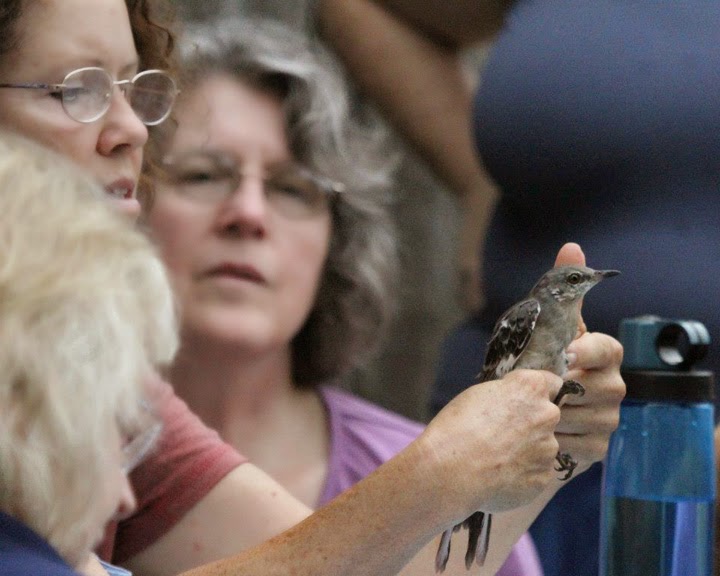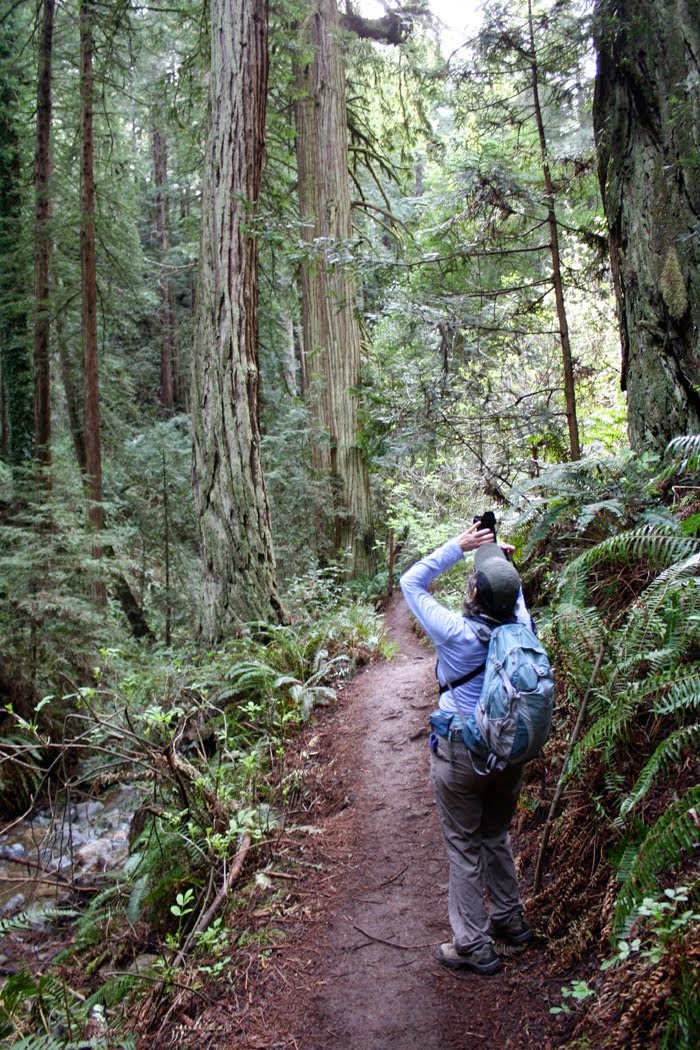If you love nature and you love to recreate what you see and experience in watercolor, there couldn't be anything more fun than diving back into a subject and watching it come to life in a painting. When it comes to birds, that could also mean tripling and quadrupling your fun!
It has been fun on top of fun to hear and witness this male Downy woodpecker visiting my nectar feeders intended for tiny hummingbirds. But top it off with interactions between the two species and smiles just keep coming.Painting this sketch had the same effect. I smiled a lot. And when you're smiling there is no worry about outcome. You're just loving your subject and loving the opportunity to give it center stage. And there's a number of ways to create that stage, among them, painting light against dark, soft against hard, and color that leads the eye through the painting. I often approach these elements intuitively
I chose my background colors in this sketch first, focusing on the greens of the trees and the light in the spaces in the unfocused background. A principle I learned from my long-time watercolor mentor and instructor, Ann K Lindsay--the fewer colors you use, the more unified your painting. I've found this to be excellent advise that stuck with me and greatly simplifies decisions!
In this sketch my primary colors are DVP Cobalt Blue , WN Quinacridone Gold for my yellow, and DVP Permanent Rose for my red. (Note: brands with the same color name vary in actual color. WN stands for Winsor & Newton brand paint, DVP for Da Vinci). The rest of my colors consisted of two neutrals and sap green, all used to alter the shades of the above three primaries: DVP Sap Green, to add a little warmth to green made with the gold and blue; WN Van Dyke Brown, used with cobalt to make black; WN Burnt Sienna used with rose to warm it. I also use burnt sienna with blue to make grays, adding a touch of the other colors on the palette as needed.
As I'm working on the light washes, I'm making a map of sorts. I'm aware that my hummer and the water in the feeder will both be the same colors as the background. This means I have to draw the viewers eye to my subject with the placement of values, that is, the positioning of darks and lights. At this point (above), I also add color to the nectar container which reflects the background, and to the water in the feeder as a reference for these values. The water and the feeder represent my lightest lights.
The hummer is next, creating wings that have a fairy-like movement of 40 to 80 beats per second.

To soften edges on the hummer's wing, I laid down paint strokes, rinsed my brush, blotting excess water from the brush with a sponge or paper towel, then brushed along the edge of the paint. The paint edge is softened by the moisture from the brush. The amount of water you leave in the brush controls how far the pigment will spread from the original line.
One way to suggest hummer wing movement is illustrated below--a combination of disconnected shapes, blurs, a mix of hard and softened lines.
Below is the almost finished sketch, created in one of my favorite sketchbooks made by Aquabee, on 11 x 14 paper. What made me realize it wasn't quite finished was a glimpse at an LCD image on my camera that highlighted the widely separated gold areas.
The yellow in this sketch is like an accessory with a special function. It either helps move the eye through the painting or it distracts, especially since there is no yellow in my two stars. So, I added yellow to areas where 'my eye wanted to see yellow', moving left to right from one side of the painting to the other, dabs of yellow glaze leading through the two birds. You may already know how this dictate-from-the-eyes feels. It's a sensation that is visually uncomfortable, that is, it bothers until the correction is made. And when it's right, you know it--your eyes are happy again. See what you think by comparing the finished sketch below to the one above.
In bird-watching, the intuitive ability to identify a bird by its shape and movement is referred to as 'jizz'. It's a wholistic and instant recognition. It's learned. Painting works the same way. Besides helping you learn the skills of manipulating water and pigment on paper, practice develops jizz, your eye's intuitive ability to know what your painting needs in order to please you.


























